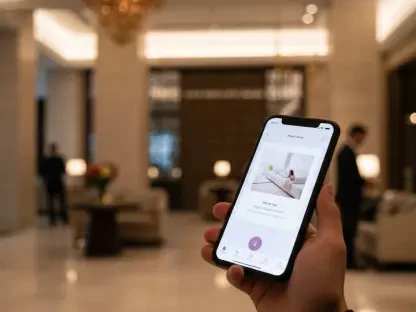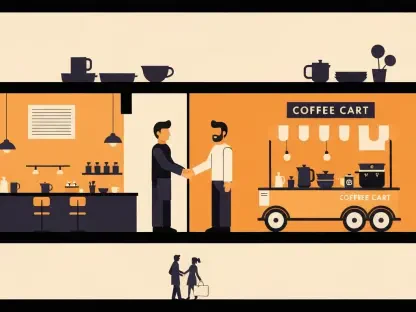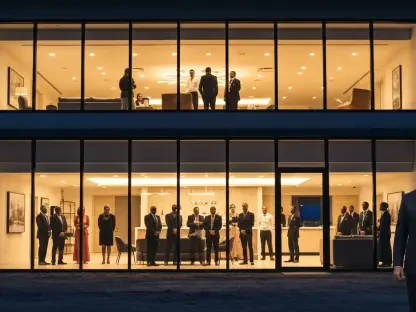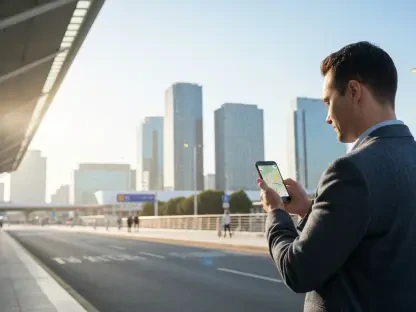Allow me to introduce Katarina Railko, our esteemed hospitality expert whose extensive experience in the travel and tourism industry has shaped her deep understanding of workplace dynamics. With a strong background in entertainment and events, particularly in expos and conferences, Katarina brings a unique perspective on how communication and culture intersect in modern organizations. In this interview, we dive into the evolving landscape of workforce engagement, exploring topics like the impact of generational diversity, the shift toward intentional and community-driven communication, the power of storytelling in fostering connection, and innovative approaches to onboarding and employee experiences.
Can you share what left the biggest impression on you from recent discussions around the future of the workforce at events like B.Inspired?
I was really struck by the emphasis on how diverse the workforce has become, especially with five generations working together for the first time. It’s a unique moment in history, and the conversations around this dynamic highlighted how much culture is being reshaped. For me, the key takeaway was the need to move beyond assumptions and truly understand each group’s needs to create a sense of belonging. It resonated with my own experiences in hospitality, where connecting with diverse teams and clients is essential.
How do you think having multiple generations in the workplace is influencing the overall culture within organizations?
It’s creating both challenges and opportunities. On one hand, you’ve got different communication styles and expectations clashing—older generations might prefer formal emails, while younger folks lean toward quick, informal chats on platforms like Slack. On the other, this mix fosters incredible learning. I’ve seen younger employees bring fresh, tech-savvy ideas that inspire veterans to adapt, while seasoned professionals offer wisdom that helps ground newer hires. The key is to avoid silos based on age and encourage collaboration that leverages everyone’s strengths.
With younger generations like Gen Z and Gen A moving toward community-focused platforms over traditional broadcast communication, how should companies adapt their internal messaging strategies?
Companies need to meet these generations where they are, which means embracing platforms that prioritize interaction over one-way messages. It’s not just about using tools like Snapchat or Discord, but about creating spaces for dialogue where employees feel heard. I’ve seen organizations successfully use internal social channels to crowdsource ideas or host casual Q&A sessions with leadership. It’s also about balance—while younger employees might thrive in these community spaces, companies must ensure other generations aren’t left out by maintaining varied communication methods.
When it comes to onboarding early-career talent, what elements do you believe make the process memorable and effective for new hires?
A great onboarding process is all about clarity and connection from day one. New hires, especially younger ones, often want to know their growth path right away—so addressing the “what’s next” question early builds trust. Beyond that, it’s about creating an experience, not just a checklist. I’ve seen programs that pair new employees with mentors or involve them in real projects from the start leave a lasting impact. It shows them they’re valued and part of the team, which is huge for retention and engagement.
Innovative events, like virtual gatherings where participants use avatars to present to leadership, are gaining traction. What do you think makes these kinds of experiences so engaging for participants and audiences alike?
These events tap into creativity and playfulness, which can break down barriers and make interactions feel more human, even in a virtual space. Using avatars, for instance, adds a layer of fun while allowing people to express themselves uniquely. It also fosters authenticity—when you know your audience and tailor the experience to them, it shows. I think this kind of innovation is especially powerful for younger talent who value experiences that feel fresh and interactive over traditional, stiff formats.
There’s a growing push to move away from generic, top-down communication toward more intentional, two-way conversations. Why do you believe this shift is critical for employee engagement?
Generic broadcasts often feel impersonal and can leave employees disconnected, especially in large organizations. Two-way conversations, on the other hand, build a sense of intimacy and show that leadership is listening. In my experience, when employees have a chance to share feedback or ideas, they feel more invested in the company’s direction. The challenge is avoiding the pitfall of overloading everyone with the same message—tailoring communication and creating dialogue ensures people feel seen, no matter the size of the workforce.
Storytelling has been highlighted as a powerful tool to create emotional connections in the workplace. How have you seen this approach impact behavior or engagement in professional settings?
Storytelling is transformative because it moves beyond dry facts and taps into emotion, which is what really drives change. I’ve seen it work wonders at events and conferences where leaders share personal anecdotes or real employee stories to illustrate a point. It creates a shared experience that sticks with people. For instance, turning employee challenges into a narrative—like through a play or presentation—can make leadership more empathetic and spur actionable change. It’s about making the message relatable and memorable.
What’s your forecast for the future of workplace communication as we head into the coming years?
I think we’re going to see an even stronger focus on personalization and emotional connection. With technology evolving, companies will lean more on data to understand their people and tailor communication accordingly. At the same time, the human element—storytelling, dialogue, and creating psychological safety—will be non-negotiable. We’ll also see more hybrid approaches, blending virtual innovations with in-person experiences to keep everyone engaged, no matter where they are. The goal will be building cultures where every employee, regardless of generation or role, feels they truly belong.









